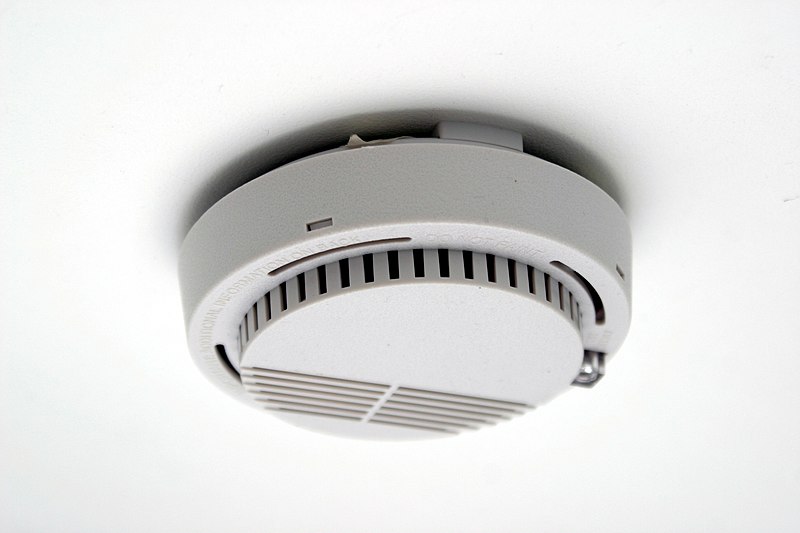What's the Difference? RCD vs. Circuit Breaker in WA Homes
Electrical safety is crucial for every home and business in Western Australia. Understanding the difference between RCDs and circuit breakers is key. These devices play vital roles in protecting your property and loved ones.
RCD stands for Residual Current Device. It’s designed to prevent electric shocks by cutting off power when it detects an imbalance. Circuit breakers, on the other hand, protect electrical circuits from damage due to overloads or short circuits.
Both devices are essential for a safe electrical system. They serve different purposes but work together to enhance safety. Knowing how they function can help you make informed decisions about your electrical setup.
In WA, regulations require RCDs in new homes. This ensures a higher level of safety for residents. Regular maintenance and testing of these devices are also important.
Choosing the right electrician for installation and advice is crucial. A professional can ensure compliance with safety standards and provide peace of mind.
Understanding Electrical Safety Devices in WA
Electrical safety devices are the backbone of any reliable electrical system. They protect homes and businesses from potential hazards caused by electrical faults. In Western Australia, these devices are not just recommendations; they are legal requirements for new constructions and renovations.
RCDs and circuit breakers are two key devices in this framework. While RCDs prevent electric shocks by detecting current leaks, circuit breakers focus on preventing damage from overloads and short circuits. Both play distinct roles but share the same ultimate goal: ensuring safety.
Here’s a quick overview of key electrical safety devices in WA:
- RCDs (Residual Current Devices): Cut power during current imbalance.
- Circuit Breakers: Interrupt power during overloads or shorts.
Implementing these devices requires adhering to WA safety standards. Failing to do so could lead to legal issues and jeopardise safety. Homeowners and business owners should prioritise having certified electricians install these critical devices to ensure maximum protection.
What Is a Circuit Breaker? Types and Functions
A circuit breaker is a crucial component in any electrical system. It safeguards your home or business from electrical faults, particularly overloads and short circuits. When excess current flows through a circuit, it can cause damage or even fires.
Circuit breakers automatically stop the electrical flow to prevent these risks. Unlike fuses, which need replacing after they blow, circuit breakers can simply be reset. This convenience makes them an integral part of modern electrical safety.
There are several types of circuit breakers, each designed for specific applications. Here’s a list to help understand their differences:
- Single-Pole Breakers: Ideal for basic residential circuits.
- Double-Pole Breakers: Used for large appliances.
- Three-Pole Breakers: Common in commercial settings.
Choosing the right type depends on your system’s requirements and capacity. A qualified electrician can assess your needs and recommend suitable options. Regular inspections are vital to ensure these devices function properly. Wear, tear, or damage could compromise their efficiency, putting your property at risk. Reliable circuit breakers contribute to a safer, more efficient electrical system, vital for any home or business.
What Is an RCD (Safety Switch)? How It Works
An RCD, or Residual Current Device, is another critical safety component. It aims to protect individuals from electric shock caused by current leakage. This device monitors the electrical current flow in circuits.
Upon detecting an imbalance, it swiftly disconnects the circuit. It is more sensitive than a circuit breaker and acts before dangerous currents can cause harm. In Australia, RCDs are commonly referred to as safety switches.
Here’s how an RCD operates:
- Constant Monitoring: It keeps track of the current flowing in and out.
- Detects Imbalance: Any discrepancy is a warning sign.
- Instant Disconnection: It trips within milliseconds to cut off power.
RCDs are especially important in areas prone to moisture. Kitchens, bathrooms, and outdoor areas present higher risks of electric shock. Therefore, these environments must be equipped with RCDs for added protection.
Regular testing of RCDs is essential to ensure they work correctly. Pressing the test button should trip the device. If not, a qualified electrician should investigate and repair any issues promptly. These devices are a vital part of any comprehensive approach to electrical safety. Ensuring they function properly enhances safety measures for both residential and commercial settings.
RCD vs Circuit Breaker: Key Differences Explained
Understanding the distinctions between RCDs and circuit breakers is crucial. While both enhance electrical safety, their functions differ significantly. An RCD detects faults leading to electric shock, while a circuit breaker prevents circuit overloads and short circuits.
The sensitivity levels of these devices are notably different. RCDs can detect small leakage currents that circuit breakers might overlook. This allows RCDs to act faster in preventing personal harm due to electrical leaks.
Let’s summarise the key differences:
- Functionality: RCDs focus on shock prevention; circuit breakers guard against overloads.
- Sensitivity: RCDs are more sensitive to current discrepancies.
- Installation Areas: RCDs are vital in moisture-rich zones.
Both are fundamental in establishing a secure electrical environment. Combining them provides comprehensive protection. Homeowners, business owners, and property managers should prioritise having both devices installed.
Their roles complement each other in a broader safety strategy. Circuit breakers protect infrastructure and appliances, while RCDs are personal safety guardians. Together, they ensure both human safety and electrical system integrity. This dual approach helps prevent both accidents and electrical system damage.
Why Both Devices Are Essential for WA Homes and Businesses
In Western Australia, electrical safety is paramount. Both RCDs and circuit breakers play vital roles. For homes, these devices safeguard families from electrical hazards. They help prevent potential shocks and fires, ensuring a safer living environment.
Businesses benefit too. Reliable electricity is essential for operations. With both RCDs and circuit breakers, downtime due to electrical issues diminishes. This means fewer disruptions and enhanced productivity.
The combination of these devices offers a comprehensive protective shield. RCDs guard against potential shocks in wet areas, while circuit breakers protect systems from overloads. This dual protection is crucial for safety and compliance.
Benefits include:
- Enhanced protection against electric shock
- Prevention of electrical fires
- Compliance with safety regulations
- Reduced risk of operational downtime
Choosing to install both devices is a proactive safety measure. It demonstrates a commitment to safeguarding lives and property.
Legal Requirements and Compliance in Western Australia
Understanding the legal requirements for electrical installations in Western Australia is crucial. The law mandates specific safety standards to protect residents and property.
RCDs are a legal necessity in new builds. They must be installed on power and lighting circuits, ensuring added safety against electrical mishaps. Output (British English):
This compliance is not just for new homes but extends to rental properties, ensuring tenants are safeguarded.
Circuit breakers are also essential components in modern electrical systems. They must comply with Australian standards to ensure reliable protection against overloads and short circuits. Non-compliance can lead to significant legal consequences and safety risks.
Key compliance points include:
- Mandatory RCD installation in new homes and rentals
- Regular inspections for adherence to Australian standards
- Ensuring both RCDs and circuit breakers meet safety regulations
Maintenance, Testing, and Troubleshooting Tips
Regular maintenance of RCDs and circuit breakers is essential for safety and efficiency. Begin by inspecting for any visible damage or wear, such as burns or corrosion.
Testing RCDs is simple. Press the test button on the device, which should cause it to trip if it’s functioning properly.
It’s recommended to perform this test every three months to ensure effectiveness.
If your circuit breaker trips frequently, it may signal an overloaded circuit or faulty wiring. Consult a professional electrician to diagnose and rectify these issues promptly.
Effective maintenance and troubleshooting steps include:
- Conduct regular visual inspections for damage
- Test RCDs every three months by pressing the test button
- Address frequent tripping with professional help
Maintaining your electrical safety devices properly can prevent costly repairs and reduce the risk of electrical hazards. Always prioritise safety and adhere to manufacturer guidelines.
Upgrading and Modernising Your Electrical System
Modern electrical systems in WA homes and businesses enhance safety and efficiency. Upgrading your system can prevent electrical faults and improve functionality.
Installing the latest RCDs and circuit breakers is a smart investment. They offer advanced features, ensuring better protection against faults and electrical fires.
Consider these steps for upgrading:
- Replace outdated equipment with modern RCDs and circuit breakers
- Consult an electrician for a comprehensive assessment
- Opt for devices that meet current safety standards
Modernising your electrical system not only boosts safety but also aligns with today’s stringent safety regulations. Staying updated with technological advances in electrical safety devices is crucial for protecting your property and ensuring peace of mind.
Choosing the Right Electrician for Installation and Advice
Selecting a qualified electrician ensures reliable installation and maintenance of RCDs and circuit breakers. Their expertise is vital for safety compliance and system efficiency.
When choosing an electrician, consider the following:
- Verify their licence and insurance
- Ask for referrals or read customer reviews
- Ensure they are familiar with WA’s safety standards
A skilled electrician offers valuable advice, enhancing your property’s electrical safety and longevity.
Frequently Asked Questions: RCDs, Circuit Breakers, and Safety Switches
Understanding the distinct roles of RCDs, circuit breakers, and safety switches is crucial. Many homeowners and business owners have questions about these devices.
Here are some common FAQs:
- What is a safety switch? A safety switch, another term for RCD, protects against electric shock by cutting power quickly.
- Do I need both devices? Yes, both devices offer complementary protection, RCDs for shock prevention and breakers for circuit protection.
- How often should RCDs and breakers be tested? Test RCDs regularly, at least every three months, and check breakers annually for signs of wear.
By addressing these common questions, you can ensure your property remains safe and compliant with local regulations.
Conclusion: Protecting Your Property and Peace of Mind
Investing in RCDs and circuit breakers is essential for safeguarding your home or business. These devices provide critical protection against electrical hazards.
A well-maintained electrical system not only enhances safety but also ensures operational efficiency. By staying compliant with WA regulations and regularly testing these devices, you protect both your property and peace of mind. Consult a professional electrician for expert installation and advice tailored to your needs.
Important Safety Notice
While this guide provides helpful information, electrical work can be dangerous and must comply with Australian Standards. Always consult with or hire a licensed electrician for any electrical work in your home or business.
Related Articles

How Much Does Ceiling Fan Installation Cost in Perth? 2025 Price Guide
Discover the ceiling fan installation cost in Perth for 2025. Our guide covers pricing, factors influencing charges, and benefits of hiring professionals for Perth ceiling fans.

Do I Need an Electrical Safety Certificate to Sell My House in WA?
Complete guide to electrical safety certificates for selling property in Western Australia. Learn legal requirements, costs, and how to obtain certification.

How to Replace a Smoke Alarm Battery: A Step-by-Step Guide
Complete guide to replacing smoke alarm batteries safely. Learn which battery types to use, troubleshooting tips, and when to call a professional electrician.
You might also need
Related Services
Appliance Installation Services
Professional electrical appliance installation in Perth. Licensed electricians for safe oven, cooktop, rangehood, and dishwasher installations with warranty.
Appliance Repair Services
Expert electrical appliance repair in Perth. Fast repairs for ovens, cooktops, rangehoods, and dishwashers. All brands including Baumatic, Blanco, Bosch, and more.
Data & Network Cabling
Professional data and network cabling for Perth homes and businesses. Cat6/Cat7 installation, office fit-outs, NBN cabling. Fast, reliable connectivity where you need it.
"Professional, on time, and great workmanship."
Ibrahim Najjarine
"Great service. Outstanding work ethic. Very reasonable rates. Done what was agreed upon proficiently and on time. Definitely recommend to others"
Freddy Zarby
"Turned up on time work man ship absolutely professional and affordable can't fault this companies work will definitely recommend to anyone that need electrical work done once again thank u guys"
Nicholas Hourn
Join our satisfied customers in Cannington and surrounding areas
Get Your Free QuoteFree Consultation
Get a free quote
Need an Expert Electrician?
Get professional electrical services from Perth's trusted team
